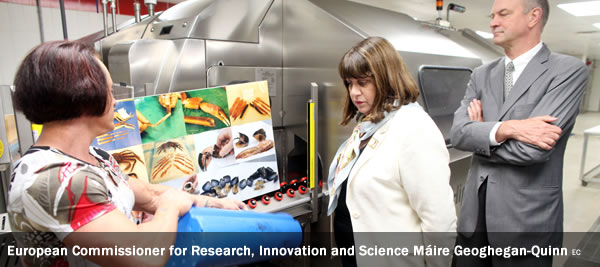European Commissioner for Research, Innovation and Science Máire Geoghegan-Quinn said: “We have made good progress on the European Research Area in recent years. It is now up to Member States and research organisations to make good on their commitments and put in place the necessary reforms. The Commission will help where it can, including with the €80 billion investment from our new research and innovation programme, Horizon 2020. In particular, national and EU research efforts need to be much more closely aligned if we are to increase impact at EU level.”
The ERA partnership between Member States, research stakeholders and the Commission has made good progress in delivering ERA. The conditions for achieving a European Research Area (ERA), where researchers and scientific knowledge can circulate freely, are in place at the European level. Reforms must now be implemented at the Member State level to make ERA work.
This is the main conclusion of the latest ERA progress report, presented today by the European Commission. The report updates last year’s overview (IP/13/851), and presents individual country reports that give a snapshot of implementation on the ground, notably at the level of research organisations.
At the same time differences still remain at Member State and institutional level. For example, while competitive project-based funding occurs in all Member States, the extent of it varies significantly between countries. And while more than half of the Member States have initiatives in place supporting gender equality in research, the pace of real change is too slow. While the report concludes that there is no single path to achieving ERA, it is also clear that ERA is most effective and beneficial when national measures are in place.
Member States are due to put forward ‘ERA Roadmaps’ by mid-2015, which will outline their next steps towards ERA implementation. The Commission, research stakeholder organisations and Member States will meet in Brussels in March 2015 to take stock.
ERA is about enabling researchers, research institutions and businesses to better move, compete and co-operate across borders. This will strengthen EU Member States’ research systems, increase their competitiveness and allow them to work together more effectively to tackle major societal challenges.
EU leaders have repeatedly stressed the importance of completing the European Research Area, setting a deadline of 2014 in European Council conclusions of February 2011 and March 2012. This led the Commission to propose “A Reinforced European Research Area Partnership for Excellence and Growth“, which identified actions Member States, Stakeholders and the European Commission should take to achieve ERA. The five priorities on which progress is assessed are: effectiveness of national research systems; transnational cooperation; an open labour market for researchers; gender equality and gender mainstreaming in research; and optimal circulation and transfer of scientific knowledge.
The information in the ERA Progress Report was gathered from several sources, notably from the National Reform Programmes 2014. The Commission also conducted a survey of research-funding and research-performing organisations in all Member States and countries associated to the EU research programme, and this information was complemented by the MORE 2 study and Innovation Union Scoreboard 2014.
The ERA monitoring put in place is delivering data on levels of progress made on the ERA policy actions. However, the fact that much of this data must be gathered on a voluntary basis puts limits on its effectiveness for policy making. Further work will be needed to identify and fine-tune the essential components and enable data collection to evolve. The Commission will launch a debate with Member States on the best possible level of coordination and alignment of national research strategies and pooling of funding in the domains of the societal challenges in order to increase impact at EU level.
